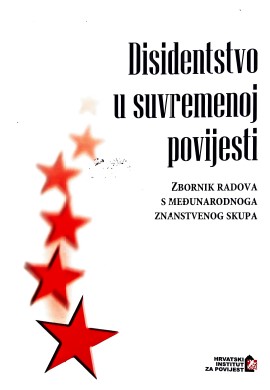Vodice između križa i zvijezde
Vodice between the Cross and the Star
Author(s): Stipe Kljajić
Subject(s): History of Church(es), Political history, Marxism, Government/Political systems, Politics and religion, Post-War period (1950 - 1989), History of Communism
Published by: Hrvatski institut za povijest
Keywords: Vodice; the Communist Party; Communism; Marxism; the Catholic Church; Catholicism/Christianity;
Summary/Abstract: Due to the part it played during the wartime Partisan movement and its prewar Communist experience the town of Vodice became an important stronghold in the district of Šibenik on the road toward the creation of a tradition which was founded on communist ideology, brotherhood and unity, and partisan struggle. In such circumstances a conflict grew between the Catholic Church and the Communist Party in this Dalmatian peasant town following the Second World War. Along the lines of this campaign exemplified by the events of Good Friday 1948, the polarization of its inhabitants is analyzed around two massive gatherings (procession and kolo). The clash of these two gatherings, which served to represent the power and social mobilization of the conflicting forces, took place in the ambiance of the small and narrow kaleta of Vodice and its fields which added to the atmosphere of tension and animosity. Such an atmosphere was channelled in postwar Vodice into a long doctrinal conflict between two institutions and traditions and in some sense symbolically personified not only Vodice’s, but also Croatia’s and indeed a universal experience of their conflict. In this regard, the clash in Vodice coincided with the zenith of their conflict which was expressed in the anti-Church character of the communist regimes in Eastern Europe and in the potential expansion of communism to Italy, the centre of the Catholic Church. As far as the doctrinal differences between Catholicism, or the Church and communist traditions are concerned, they represented a particular segment of the general collision of the Church with “modernism’’. However, unlike other ‘’modernist ideas or ideologies’’, communist tradition was specific and distinct because of its ultra-radical animosity toward the Church and Catholicism, and Christianity in general.
Book: Disidentstvo u suvremenoj povijesti
- Page Range: 223-239
- Page Count: 17
- Publication Year: 2010
- Language: Croatian
- Content File-PDF

